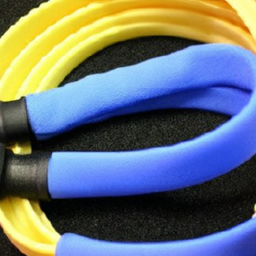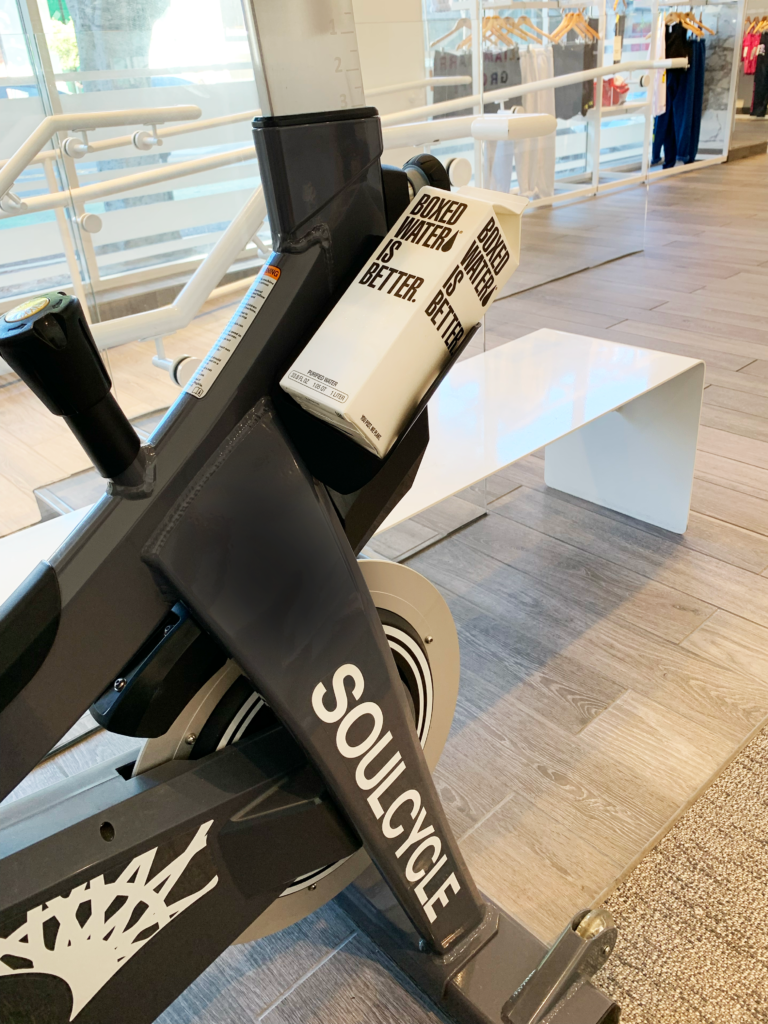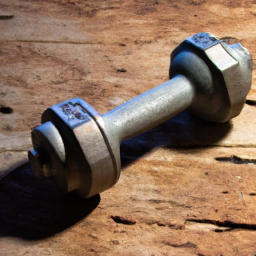Are you tired of feeling stiff and sore after your workouts? Do you want to maximize your performance and prevent injuries? Look no further! Introducing “How To Warm Up Properly Before Each Workout: Preparing Your Body For Success.” This informative guide will teach you the essential steps to warming up your body effectively before any workout. Say goodbye to muscle stiffness and hello to peak performance. By following these simple warm-up techniques, you’ll be well on your way to a successful workout every time. Don’t miss out on the opportunity to unlock your body’s full potential – grab your copy now and prepare to conquer your fitness goals!

Importance of Proper Warm-up
Benefits of warming up before a workout
Warming up before a workout is often disregarded or rushed through, but it plays a crucial role in helping you perform at your best and avoid injuries. The benefits of a proper warm-up cannot be emphasized enough. Firstly, it increases your heart rate and circulation, ensuring that your muscles receive adequate oxygen and nutrients. This, in turn, prepares your body for the physical demands it is about to face during the workout.
Additionally, warming up helps to increase your body temperature, making your muscles and joints more pliable and flexible. This flexibility lowers the risk of strains, sprains, and other injuries that could occur during exercise. It also enhances your overall performance by improving your range of motion, allowing you to move more efficiently and effectively.
Mental preparation before a workout
Apart from the physical benefits, a warm-up also has a positive impact on your mental state before a workout. As you go through the warm-up routine, you are mentally preparing yourself for the upcoming physical exertion. This process helps to improve focus, concentration, and mental alertness, setting the stage for a productive workout session. By taking a few minutes to warm up your mind, you enhance your ability to push through challenges, maintain motivation, and achieve your fitness goals.
Avoiding injuries with a proper warm-up
One of the primary goals of warming up is injury prevention. By gradually increasing your heart rate, loosening up your muscles, and activating the correct muscle groups, you significantly reduce the risk of injury during your workout. Without a proper warm-up, your body is not prepared for the stresses and strains of exercise, making it more vulnerable to injury.
General Guidelines for Warming Up
Duration of warm-up
The duration of your warm-up will depend on the nature and intensity of your workout. As a general rule of thumb, aim for a warm-up that lasts between 10 to 15 minutes. This timeframe allows sufficient time to raise your heart rate, increase blood flow, and warm up your muscles without exhausting yourself before the main exercise.
Dynamic stretching vs. static stretching
Engaging in dynamic stretching rather than static stretching during your warm-up is highly recommended. Dynamic stretching involves continuous movement and stretching of the muscles, keeping them in motion and gradually increasing their flexibility. In contrast, static stretching involves holding a stretch in a stationary position for a certain period.
While static stretches are still beneficial for improving flexibility, they are best reserved for a cool-down routine after your workout. During the warm-up phase, dynamic stretching is preferred since it promotes muscle activation and prepares your body for movement.
Incorporating mobility exercises
Including mobility exercises in your warm-up routine can further enhance your overall performance and reduce the risk of injuries. Mobility exercises focus on improving the range of motion in your joints and working on any specific areas of tightness or restriction. These exercises can be as simple as joint rotations, leg swings, or arm circles.
Incorporating mobility exercises into your warm-up allows you to target specific areas that need attention, ensuring that your joints are adequately prepared for the upcoming workout.
Cardio Warm-up
Benefits of cardiovascular warm-up
A cardiovascular warm-up is essential, particularly if your workout involves high-intensity or aerobic exercises. Engaging in cardio-based movements before your main workout helps to gradually increase your heart rate, improve blood circulation, and warm up your muscles. This preparation allows you to perform at a higher level, as your body is better equipped to handle the increased demands of your workout.
Additionally, cardiovascular warm-ups help to loosen up tight muscles, increase lung capacity, and mentally prepare you for the upcoming physical exertion. It sets the stage for an effective workout by priming your body and mind for cardiovascular endurance activities.
Choosing the right form of cardio
When selecting the type of cardio exercise for your warm-up, it is important to choose an activity that mimics the movements you will be doing during your main workout. This ensures that you are warming up the specific muscle groups and joints that will be utilized. For example, if you are about to do a leg-intensive workout, consider starting with a few minutes of light jogging, cycling, or using the elliptical machine to warm up your lower body.
It’s also important to choose a form of cardio that you enjoy or find engaging. This will not only make your warm-up more enjoyable but will also increase your overall motivation and adherence to your fitness routine.
Sample cardio warm-up routine
Here is a sample cardio warm-up routine that you can incorporate into your workouts:
- Begin with 5 minutes of brisk walking or light jogging to gradually increase your heart rate.
- Transition into 5-10 minutes of dynamic stretching exercises, such as walking lunges, high knees, or butt kicks. This will further warm up your muscles and increase flexibility.
- Move into 10 minutes of low-impact cardio exercises, such as stationary cycling or stepping on a stair climber. This will increase your heart rate further and prepare your body for the main workout.
- Finish your warm-up with a few minutes of mobility exercises to target specific areas of tightness or restriction.
Remember to adjust the intensity and duration of your cardio warm-up based on your fitness level and the requirements of your workout.
Joint Mobilization
Why joint mobilization is important
Joint mobilization is a crucial aspect of a comprehensive warm-up routine. It involves moving and lubricating the joints to improve their range of motion, reduce stiffness, and enhance overall joint health. By mobilizing your joints before a workout, you allow them to function optimally and decrease the risk of joint-related injuries.
Additionally, joint mobilization helps to stimulate the production of synovial fluid, a natural lubricant that reduces friction between the articular surfaces of the joints. This fluid allows for smoother and pain-free joint movements, ensuring that you can perform your exercises with ease.
Joint mobilization exercises for major joints
Here are some joint mobilization exercises that target the major joints of the body:
-
Shoulder Circles: Stand tall with your feet shoulder-width apart. Extend your arms straight out to the sides, parallel to the ground. Slowly and smoothly rotate your arms in small circles in a forward direction for about 10 repetitions. Then, reverse the direction and perform 10 repetitions in the backward direction.
-
Hip Circles: Stand upright with your feet hip-width apart. Place your hands on your hips and slowly rotate your hips in a circular motion. Perform 10 repetitions in one direction, and then switch to the opposite direction for another 10 repetitions.
-
Ankle Alphabet: Sit on the edge of a chair or bench with your feet hovering just above the ground. To mobilize your ankle joints, imagine tracing each letter of the alphabet with your toes. Perform this exercise on each foot, ensuring that your movements are smooth and controlled.
How to incorporate joint mobilization into warm-up
To incorporate joint mobilization into your warm-up routine, start by allocating a few minutes before your main workout solely for joint mobilization exercises. Choose exercises that target the major joints that will be utilized during your workout, and perform them in a slow and controlled manner.
Focus on moving each joint through its full range of motion, paying attention to any areas of tightness or discomfort. By consistently performing joint mobilization exercises as part of your warm-up routine, you will notice improvements in joint flexibility, reduced joint pain, and an enhanced overall exercise experience.
Muscle Activation
Understanding the concept of muscle activation
Muscle activation refers to the process of consciously engaging and firing specific muscles to prepare them for action. This process is important during the warm-up phase as it helps to awaken dormant muscles and establish correct movement patterns.
By performing targeted muscle activation exercises before your workout, you activate the specific muscles required for your exercise routine. This not only enhances the effectiveness of your workout but also reduces the risk of compensatory movements or imbalances. Muscle activation helps to improve body awareness, neuromuscular coordination, and overall muscular strength.
Key muscle activation exercises for different muscle groups
Here are some key muscle activation exercises targeting different muscle groups:
-
Glute Bridges: Lie on your back with your knees bent and feet flat on the ground. Activate your glute muscles by pushing your hips off the ground until your body forms a straight line from your knees to your shoulders. Hold for a few seconds, then lower your hips back to the ground. Perform 10-15 repetitions.
-
Plank: Start in a push-up position, with your forearms on the ground and elbows directly under your shoulders. Activate your core muscles by tightening your abs and glutes, and hold this position for about 30 seconds. Focus on maintaining proper form and breathing throughout the exercise.
-
Thoracic Spine Rotation: Begin in a seated position with your legs extended in front of you. Cross one leg over the other and place your opposite hand on the outside of the crossed knee. While keeping your core engaged, rotate your upper body towards the crossed knee, feeling the activation in your oblique muscles. Hold for a few seconds, then switch sides and repeat.
Benefits of muscle activation
Incorporating muscle activation exercises into your warm-up routine offers several benefits. Firstly, it helps to improve your mind-muscle connection, allowing you to engage the correct muscles more effectively during your workout. This can lead to greater strength gains, improved muscle tone, and enhanced overall performance.
Muscle activation exercises also help to address any muscle imbalances or weaknesses before you commence your main workout. By targeting specific muscle groups, you can correct any weaknesses or imbalances which may be holding you back from reaching your full potential.
Lastly, muscle activation exercises improve blood circulation to the targeted muscles, leading to increased nutrient delivery and improved muscle function. This can enhance your ability to generate force, reduce muscle fatigue, and decrease the risk of injuries.
Dynamic Stretching
The importance of dynamic stretching
Dynamic stretching involves moving your muscles and joints through a full range of motion in a controlled and dynamic manner. This type of stretching is crucial during the warm-up phase as it helps to increase blood flow, warm up the muscles, and improve muscle flexibility and elasticity.
Unlike static stretching, dynamic stretching prepares your muscles and joints for the demands of your workout by incorporating movement and mimicking the activities you will be performing during your main exercise. By gradually increasing the intensity and range of motion, dynamic stretching improves your overall mobility and reduces the risk of injury.
Dynamic stretching exercises for different muscle groups
Here are some dynamic stretching exercises that target different muscle groups:
-
Arm Circles: Stand with your feet shoulder-width apart. Extend your arms straight out to the sides, parallel to the ground. Begin by making small circles with your arms, gradually increasing the size of the circles. After a few repetitions, reverse the direction of the circles.
-
Walking Lunges: Take a step forward with your right foot and lower your body into a lunge position, ensuring that your right knee is directly above your ankle. Push off with your right foot and bring your left foot forward to repeat the lunge on the opposite side. Continue walking forward, alternating between left and right lunges for about 10-12 repetitions.
-
Leg Swings: Stand next to a wall or support, and hold onto it with one hand for balance. Swing one leg forward and backward in a pendulum-like motion, gradually increasing the range of motion with each swing. After a few repetitions, switch to swinging the leg side to side. Repeat the exercise on the opposite leg.
How to perform dynamic stretches properly
When performing dynamic stretches, it is important to maintain control, focus on proper form, and gradually increase the range of motion. Start with smaller movements and gradually build up to larger movements as your muscles warm up and become more flexible.
Avoid any jerking or bouncing motions, as this can lead to muscle strains or injuries. Perform each dynamic stretch smoothly and gradually, listening to your body and stopping if you feel any pain or discomfort.
Dynamic stretching should always be specific to the muscle groups you will be targeting during your main workout. By incorporating dynamic stretching into your warm-up routine, you enhance your overall flexibility, joint mobility, and muscle performance.
Specific Warm-up for Strength Training
Benefits of specific warm-up for strength training
A specific warm-up for strength training is essential for preparing your muscles and neuro-muscular system for the upcoming heavy loads and intense contractions. The primary benefits of a specific warm-up include enhanced muscle activation, increased power output, improved motor coordination, and reduced risk of injuries.
Performing specific warm-up exercises allows you to prime the targeted muscle groups, rev up your central nervous system, and mentally prepare for the heavy lifting. It also allows you to gradually increase the intensity and load, easing your body into the main strength training session without causing excessive strain or muscle imbalances.
Choosing the right warm-up weights and sets
When designing your specific warm-up for strength training, it is important to choose the correct weights and sets. The purpose of this warm-up is not to exhaust your muscles or fatigue your nervous system, but rather to prepare your body for the upcoming heavier loads.
A general guideline is to start with 1-2 warm-up sets of 8-10 repetitions using approximately 50-60% of your working weight. For example, if you are about to perform heavy squats with 100 pounds, you might start with a warm-up set using 50 pounds and another warm-up set using 70 pounds.
The key is to gradually increase the weight and intensity, ensuring that the final warm-up sets closely resemble the weight you will be using in the main strength training exercises.
Sample specific warm-up routine
Here is a sample specific warm-up routine for strength training:
-
Warm-up Set 1 – Squats: Load the barbell with approximately 40-50% of your working weight. Perform 8-10 reps with good form, focusing on your technique and activating your glutes and quadriceps.
-
Warm-up Set 2 – Squats: Increase the weight on the bar to approximately 60-70% of your working weight. Perform 5-8 reps, gradually increasing the depth and speed of your squats.
-
Warm-up Set 3 – Squats: Load the bar with 80-90% of your working weight. Perform 2-3 reps, ensuring that your form is spot on and that you are mentally prepared for the heavy weights.
Remember, the goal of a specific warm-up is to prepare your body for the main strength training exercises, not to exhaust yourself. Adjust the weights and sets according to your individual fitness level and the requirements of your workout.
Specific Warm-up for Cardiovascular Training
Benefits of specific warm-up for cardiovascular training
When engaging in cardiovascular training, a specific warm-up is vital to prepare your cardiovascular system for the demands of the workout. The benefits of a specific warm-up for cardiovascular training include increased heart rate, improved aerobic capacity, enhanced blood flow, and reduced risk of cardiovascular strain.
By performing specific warm-up exercises that mimic the movements of your main cardiovascular exercise, you gradually increase your heart rate, raise your core body temperature, and increase blood flow to your working muscles. This helps to optimize your body’s energy systems, priming you for an efficient and effective cardiovascular workout.
Choosing the right warm-up intensity and duration
When planning your specific warm-up for cardiovascular training, it is important to match the intensity and duration of the warm-up to the intensity and duration of your main cardiovascular exercise. The goal is to gradually increase the intensity without reaching maximum exertion.
Start with a low-intensity warm-up that gradually increases the heart rate and breathing, ensuring that you can comfortably hold a conversation. Then, progress to a moderate intensity that simulates the effort level you will be exerting during the main workout.
As for the duration, aim for a warm-up that lasts between 5 to 10 minutes. This timeframe allows your body to sufficiently warm up and prepare for the increased intensity of your main cardiovascular exercise.
Sample specific warm-up routine
Here is a sample specific warm-up routine for cardiovascular training:
-
Warm-up Phase 1 – Brisk Walking: Begin your warm-up with a brisk walk for 3-5 minutes. Focus on gradually increasing your speed and range of motion, ensuring that your heart rate starts to elevate.
-
Warm-up Phase 2 – Jogging or Cycling: Transition into a light jog or cycling at a moderate intensity for another 2-3 minutes. Gradually increase the speed or resistance, mimicking the intensity that you will be sustaining during your main cardiovascular exercise.
Remember to listen to your body and adjust the intensity and duration of your warm-up based on your fitness level and the specific requirements of your workout.
Incorporating Neuromuscular Exercises
Understanding the importance of neuromuscular exercises
Neuromuscular exercises directly target the connection between your muscles and your nervous system. These exercises focus on developing coordination, balance, and stability, which are crucial for optimal movement and performance.
Incorporating neuromuscular exercises into your warm-up routine helps to enhance your body’s ability to recruit the correct muscles, react swiftly to changes in balance or direction, and minimize the risk of falls or injuries. These exercises also improve proprioception, or your awareness of your body’s position in space, allowing you to move with better control and efficiency.
Neuromuscular exercises for enhanced performance
Here are some neuromuscular exercises that can be incorporated into your warm-up routine for enhanced performance:
-
Single-Leg Balance: Stand on one leg and try to maintain your balance for 20-30 seconds. Focus on keeping your core engaged, your upper body stable, and your standing leg strong. This exercise targets your proprioception and helps to improve overall balance and stability.
-
Lateral Bounds: Stand with your feet hip-width apart and then explosively jump sideways, landing on one leg. Immediately jump back in the opposite direction, landing on the other leg. Perform 8-10 repetitions on each side. This exercise targets your agility, coordination, and the ability to change direction quickly.
-
Plyometric Squat Jumps: Start in a squat position, with your feet shoulder-width apart and your knees slightly bent. Explosively jump upwards, reaching for the ceiling, and land softly back into the squat position. Perform 8-10 repetitions. This exercise focuses on your power, explosiveness, and reactive strength.
How to include neuromuscular exercises in your warm-up
To include neuromuscular exercises in your warm-up routine, allocate a few minutes to specifically target the exercises mentioned above. Begin with easier variations and progress to more challenging movements as you become more adept and confident.
Perform each exercise for 2-3 sets of 8-10 repetitions, focusing on maintaining proper form and control throughout. By consistently incorporating neuromuscular exercises into your warm-up routine, you enhance your overall movement quality, agility, stability, and performance.
Conclusion
In conclusion, the importance of a proper warm-up cannot be overstated. A good warm-up routine sets the stage for a productive and injury-free workout by preparing your body and mind for the physical demands ahead. It increases blood flow, raises body temperature, enhances flexibility, and activates the correct muscle groups.
By following the general guidelines outlined in this article and incorporating the various warm-up components, such as cardiovascular warm-up, joint mobilization, muscle activation, dynamic stretching, and neuromuscular exercises, you can design a comprehensive warm-up routine that suits your specific needs and goals.
Remember, investing a few minutes in a thorough warm-up is a small price to pay for the enormous benefits it provides. So, before your next workout, take the time to properly warm up your body and set the stage for success!




